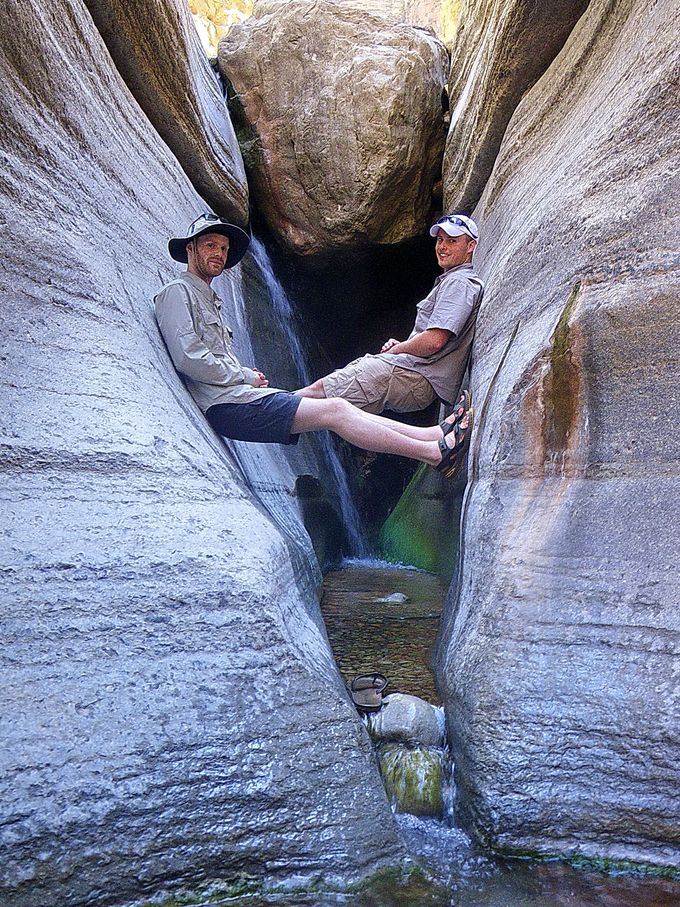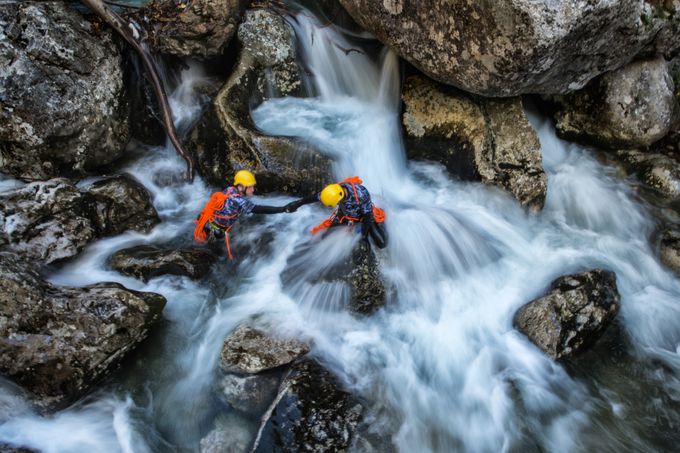As you might expect for a pastime that combines a ton of different disciplines, there are loads of canyoning techniques you can learn that will make any trip both easier and safer. Canyoning mixes elements of abseiling, swimming, climbing, bouldering and cliff jumping, so on top of a good overall level of fitness, some knowledge of basic abseiling techniques and the rudiments of rock climbing will really help you get the most out of your next gorge walking expedition.
Canyoning Techniques: Chimneying

Chimneying is an important climbing technique which helps you to navigate tight, confined spaces, making it super useful for canyoning too.
Chimneying requires you to spread your weight between two adjacent walls, helping you to control your descent down a steep, narrow section of the gorge, to save yourself time by travelling above tougher obstacles or to traverse areas where the floor of the canyon may be too narrow to fit through.
What is Canyoning? | A Beginners Guide to Gorge Walking
If you’re high enough up to be able to abseil then chimneying is a technique you shouldn’t consider unless you are a highly experienced canyoner who knows the canyon well.











